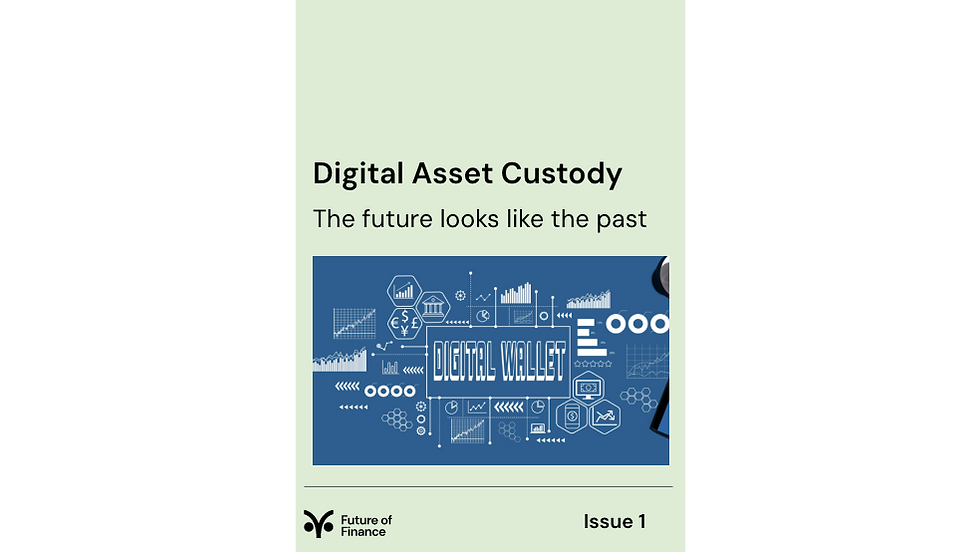Digital asset custody services are not the same as traditional custody services
- Future of Finance

- Jul 20, 2023
- 3 min read

In conventional custody arrangements, custodian banks tend to be confined mainly to post-trade services, such as settling transactions, safekeeping assets and servicing assets in terms of entitlements such as dividends and interest payments.
In digital asset custody, providers have tended to be more directly involved with the trading process.
In addition to the traditional custodial activities of safekeeping, settlement and asset servicing – which themselves present novel challenges, such as “atomic” settlement, operating digital wallets and managing corporate actions such as “air drops” – the earliest digital asset custodians active in the cryptocurrency markets developed a range of new services.
These include “staking” and collateralised lending.
These services were first developed to generate an income for holders of cryptocurrencies that do not generate conventional sources of income such as interest or dividends (see Chart 1) but rely instead on growth in capital value to yield a return at all.
Chart 1

“Staking” does offer less munificent returns than it did before the market began to shrink in November 2021 and a major cryptocurrency lender (Celsius Network) failed in July 2022. Returns of 50 per cent or more on allegedly “risk free” staking are no longer being offered.
However, with the trend for blockchain protocols to move from Proof of Work to Proof of Stake validation of transactions, a more stable market with predictable yields is likely to emerge because of reduced transaction settlement crises (where unsettled trades drive up the price of validation as some investors pay more to jump the queue) and lower energy consumption.
The second largest cryptocurrency and biggest platform for Decentralised Finance (DeFi) applications, Ether, transitioned recently from Proof of Work to Proof of Stake. There is currently US$30 billion of Ether “staked” and it is producing 5-8 per cent yields on a consistent basis (Coindesk).
Digital asset custodians often provide execution services too. This is largely because servicing holders of cryptocurrencies developed within cryptocurrency exchanges, which meant they provided custody services as well as issuance and execution. But even independent digital asset custodians have developed execution services, rather as some global custodian banks have done in the traditional securities industry.
Another service which has a parallel in the conventional securities services industry is cryptocurrency “prime brokerage.”
In the conventional securities markets, the term refers to hedge fund managers using investment banks as credit intermediaries for their trades – in effect, renting the balance sheet of the bank as a counterparty to trade with third parties - and to lend them cash and securities to leverage transaction or cover short positions.
In the cryptocurrency markets, “prime brokerage” is closer to the foreign exchange (FX) prime brokerage business, in which the digital asset “prime broker” enables professional traders – many of them drawn from the conventional FX industry – to trade currency pairs with other counterparties or exchanges. (1)
In cryptocurrency prime brokerage, the model deployed by digital asset custodians such as Copper (Copper ClearLoop) or BitGo (BitGo Settlement) uses closed circles of cryptocurrency exchanges approved by the custodian. The exchanges are reassured that the trades will not fail because they can see at any time that the counterparty holds in their custody account the cryptocurrency or cash tokens they need to settle a trade.
But the most significant way in which digital asset custody differs from conventional custody is in the way that assets available in digital form only oblige custodians to develop new techniques for fulfilling their principal duty: protecting the safety and security of customer assets.
(1) See “What cryptocurrency prime brokerage might and might not mean for digital asset markets” at https://futureoffinance.biz/what-cryptocurrency-prime-brokerage-might-and-might-not-mean-for-digital-asset-markets/
